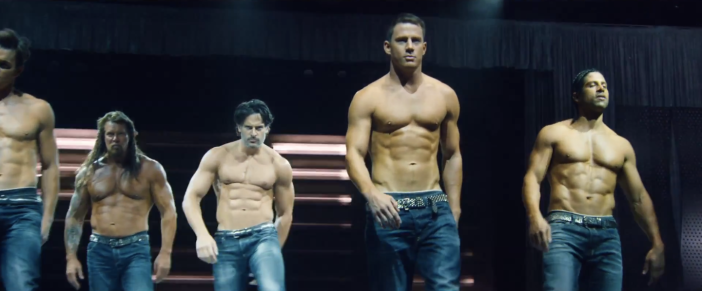Laura Mulvey’s ‘Visual Pleasure in Narrative Cinema’ (1975) can be seen as a base for many feminist theories within media. Within her writing she presented the idea of the ‘Male Gaze’, where she believed women on screen were seen as sexual objects, placed there for the eye of the heterosexual male viewer,“The film opens with the woman as an object of the combined gaze of spectator and all the male protagonists in the film. She is isolated, glamorous, on display, sexualised” Mulvey (pg. 21). She thought women were presented through three different ‘views’ , the first being how the director / camera man captures the actress in a certain way on camera. The second being how the male characters within the film views the female characters. The third being how the spectator views the character, which Mulvey believed was always through the eye of a heterosexual male.
Although Mulvey’s work was seen as a key contribution to feminist film theory it has often been subject to criticism. Many theorists have argued there is also a ‘Female Gaze’, Magic Mike is a great example, the whole film is focused on Channing Tattums body who is a male stripper. The target audience for this film was majorly women and Mike can in many ways be viewed as a sexual object on screen.

Jackie Stacey wrote ‘From the Male Gaze to The Female Spectator’ (1993) where she presented the idea of the female spectator who actively desires. Stacey talks about homoerotic desires a female spectator can have for a female character, homoerotic refers to unconscious thoughts that can be sexual, however the thoughts are not acted on, and the spectator may just have a fascination for the female character. Stacey believed “pleasures of spectator ship work on unconscious as well as conscious levels” (pg. 29). This then leads on to idea that female spectators can also have homosexual desires for females on screen and see them through the eye of a lesbian spectator rather than a heterosexual male as Mulvey suggested.
Stacey found films about “one women’s obsessive fascination with another” (pg. 28), could not be watched by spectators through the eye of a heterosexual male. She argued films of this nature explored the possibility of female spectators feeling the same way as the obsessive character on screen. The film “All about Eve’ was described by Stacey as a great example of “the pleasures and dangers of spectatorship for women” (pg. 50). The film is about a young fan called Eve who is obsessed with Margo a Broadway star, Eve manages to get into Margo’s life which ends up threatening her career and relationships.
Stacey uses a lot of Freud’s theory when analysing ‘All about Eve’, she believes “Eves journey to stardom could be seen as the feminine equivalent to the masculine Oedipal trajectory” (pg. 54). Which can be seen as Eve having a desire to be just like Margo, however when the rivalry develops it appears Eves desire of Margo becomes more of wanting to take over her life. Stacey also suggests Margo is seen as a “desirable feminine” (pg. 56), it is not just Eve who identifies with her, we as an audience also do. She is seen as a powerful women and many of the male characters within the film are intimidated by her, therefore the male characters do not objectify her as Mulvey has previously suggested. Throughout the film we see Margo through the eyes of Eve, not through the eyes of a heterosexual male.
Overall it appears there is a clear counter argument to Mulvey’s original idea of ‘The Male Gaze’, women can also have desires for women or men on screen, they may be sexual or they can just admire a character, this view appears to be a lot more updated in terms of the society we now live in.
Word Count: 585
References:
- Mulvey, L. (1975) ‘Visual Pleasure and Narrative Cinema.’ Screen, 16(3) pp. 6-18
- Stacey, J. ‘From the Male Gaze to the Female Spectator’ In Star Gazing: Hollywood Cinema and Female Spectatorship. London, New York: Routledge, pp. 19-48
Bibliography:
- Cowie, E. (1997) Representing the Woman: Cinema and Psychoanalysis. Basingstoke: Macmillan
- Freud, S. (1961) ‘Fetishism.’ In Strachey, J. (ed.) The Standard Edition of the Complete Psychological Works of Sigmund Freud. Vol. 21., London: Hogarth Press, pp. 152-159
Filmography:
- All About Eve , (1950). [film] America : Joseph L. Mankiewicz
- Magic Mike, (2012). [film] America : Steven Soderbergh

